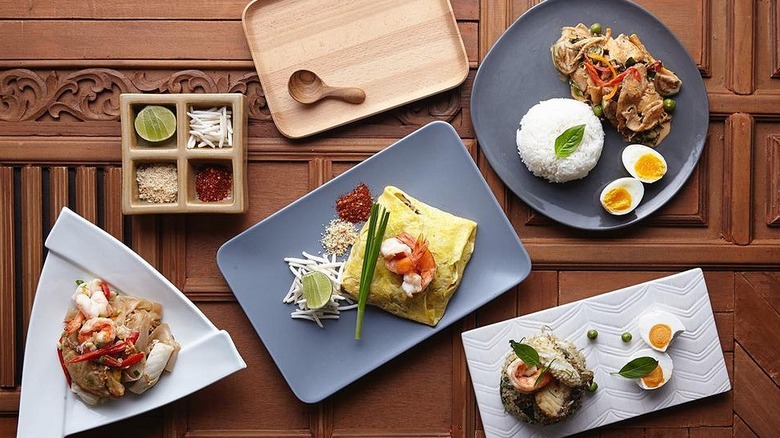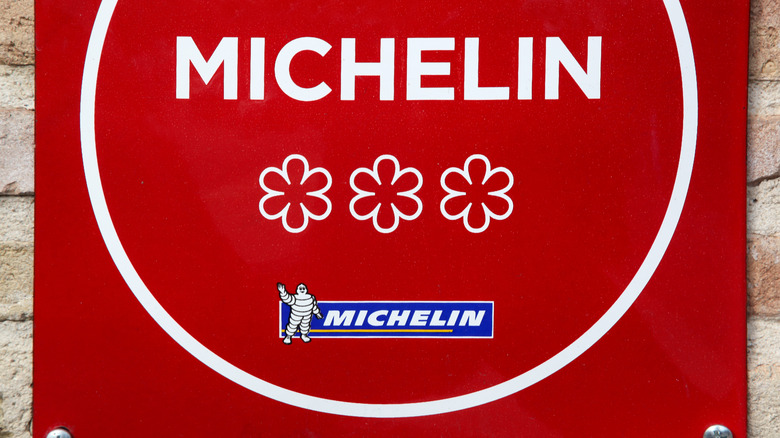How Chefs From Michelin-Starred Restaurants In Asia Are Reaching A Broader Audience
The "Michelin Guide" may be known for picking out some of the best restaurants around the world, but most of us know that affordability isn't exactly the guide's strongest suit. Per Chef's Pencil, which studied 450 Michelin two- and three-star restaurants menus and press releases, a tasting menu that features between eight and 12 courses could set you back an average of $252 per diner if you were at a two-star restaurant, and $357 if the restaurant has three stars. That quoted range doesn't include beverages, taxes, or tips. But that amount is not set in stone because it varies from city to city. In 2021, the top five list of priciest cities to dine at a Michelin-starred restaurant would have kicked off with Copenhagen, followed by Shanghai, Kyoto, Singapore, and Paris.
It's not that the "Michelin Guide" hasn't tried to be accessible to more foodies. In 1997, it began awarding its Bib Gourmand designation, which selects restaurants that offer three-course meals with more practical culinary offerings set at more affordable price limits; although what that means differs from city to city.
But it appears the creative culinary minds behind some of East Asia's Michelin-recognized restaurants have decided that it is no longer enough for them, and they're branching out to open restaurants to offer comfort food showcasing homestyle cooking, mass-market baked treats, as well as experimental dishes that might push culinary boundaries, per South China Morning Post.
Chefs are branching out to open non-starred, popular eateries
These restaurants have two things going for them. The South China Morning Post says these establishments don't have long waiting lists (at least not yet), and they offer meals at price points that aren't likely to break the bank.
One such restaurant was opened by Hong Kong's Olivier Elzer, who now serves what he calls his "Yakifrenchy" menu, which blends elements of Japanese-style robata cooking with classical French ingredients, per Official Restaurants. Another space specializes in cooking up all manner of soy-based dishes; it is the brainchild of chef Vicky Lau, whose own Hong Kong restaurant received two stars. Her secondary restaurant serves an expanded version of an "Ode to Soy" feast she served at her Michelin-starred Tate Dining Room, per Tatler Asia. In Taiwan, Richie Lin worked with Thailand's Chef Ton Tassanakajohn, both of whom run Michelin-starred restaurants in their respective home countries, to open a restaurant that offers Thai dishes created with Taiwanese ingredients, per Bangkok foodies.
The need to be creative appears to be what drives these chefs to push the envelope by opening their non-starred spaces. When he opened his new restaurant, Hong Kong's Elzer said, "Having trained under so many Michelin chefs, I always knew I wanted to develop my own style and create a new format of French cuisine." It's a trend those of us who love good food but with more limited budgets might just hope more chefs will embrace.

